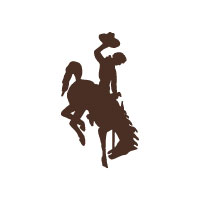
Contact Us
Institutional Communications
Bureau of Mines Building, Room 137
Laramie, WY 82071
Phone: (307) 766-2929
Email: cbaldwin@uwyo.edu

UW Grad Student Invites Public to Oct. 23 Field Trip in Fire Recovery Area
Published October 04, 2021

Areas burned by the 2020 Mullen fire in the Medicine Bow National Forest west of Laramie
will be explored in an Oct. 23 field trip led by UW graduate student Tanner Hoffman.
(Tanner Hoffman Photo)
A graduate student in the University of Wyoming’s Soil Microbial Ecology Laboratory will host a free community field trip Saturday, Oct. 23, to part of the Medicine Bow National Forest that was affected by the 2020 Mullen fire west of Laramie.
Tanner Hoffman says the field trip is open to anyone in the community who is interested in learning about fire ecology and biological recovery by exploring a post-fire ecosystem in Laramie’s backyard.
“This field trip is an exciting opportunity to share with people what recovery of natural areas looks like following a wildfire,” Hoffman says. “I hope this trip gets people excited to become community scientists and to contribute to scientific knowledge about post-wildfire recovery.”
The field trip will start at the Six Mile Gap campground at 10 a.m. For more information or to register for the field trip, go to https://www.wyomingbiodiversity.org/index.php/community-science/mullen-wildfire-community-science-initiative.
Hoffman, from Laramie, is a recipient of the UW Biodiversity Institute’s 2021 graduate student research enhancement grant. His project, “Recovery of Below- and Above-Ground Biodiversity Following the Mullen Wildfire,” was funded by the Hardy Family Forest Disturbance Community Science Excellence Fund.
“The goal of this project is to gain a better understanding of the post-fire recovery of soil microbial and plant communities, and how invasive cheatgrass and herbicide application, specifically Rejuvra, affect this process,” Hoffman says.
The project is in collaboration with the U.S. Forest Service and the public. Hoffman is creating a community science aspect of the project so that interested community members can collect data on cheatgrass invasions in Mullen fire-affected areas. In this way, the public will be able to contribute to the understanding of post-fire recovery.
“We hope to uncover the mechanisms by which cheatgrass is able to proliferate in disturbed areas,” Hoffman says. “The contributions of the public through data and sample collection as part of this project will be invaluable.”
Contact Us
Institutional Communications
Bureau of Mines Building, Room 137
Laramie, WY 82071
Phone: (307) 766-2929
Email: cbaldwin@uwyo.edu

